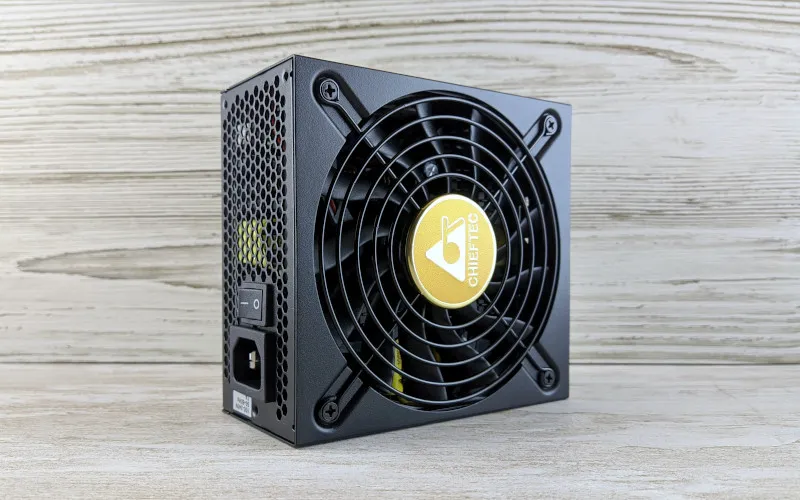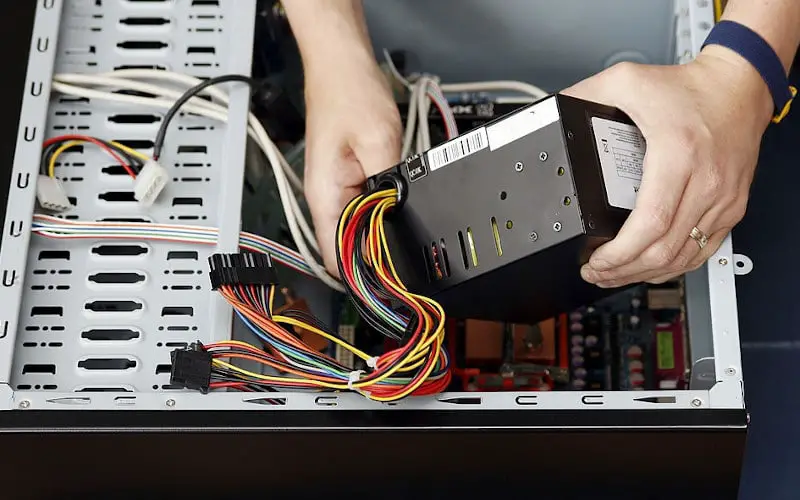Do you know which way to mount a PSU fan? This is a question that many people have asked. There are two ways, up or down. The decision could affect the performance of your computer and also its cooling capabilities.
In this blog post, we will discuss whether PSUs should be mounted with fans facing up or down and why it affects the performance of your computer.
What is a PSU?

A Power Supply Unit (PSU) is a device that provides an appropriate supply of electrical current to the computer. Although it may be considered one component, this box has many different parts—it could have several power cables, for example.
- A fan helps keep your system cool by circulating air throughout all components through slits or vents in the casing.
- The fan can be set to blow either into or out of the case, depending on what is most comfortable and effective for your system.
If you’re unsure how the fan should be blowing, turn your computer off and unplug it from the wall. Remove the side of the case (usually accomplished by removing screws on the back) and see how your fan blows.
If it’s towards you, push it to blow out of the case; if away from you, push it so that air blows into it.
If there are no slits or vents in your computer casing for airflow, your PSU fan may not be necessary. If you are uncertain, consult with a professional or take your computer to an expert if this is the case.
Should I Rotate the Power Supply Up or Down?
Up or down, that is the question. Fans in power supply units (PSUs) are almost always oriented with air blowing downwards into your computer case. This ensures that cool air outside your casing is sucked inside, and the PSU fan blows out hot air.
The logic behind this orientation has been questioned many times before, but it seems to be the best orientation at this moment.
PSUs are mounted with their fans facing down to aid cooling and reduce noise levels. It has been found that pushing hot air out of your casing will ensure lower temperatures inside, thus improving the performance of components.
This means better productivity for you. What more can you ask?
What If You Mount Your PSU the Other Way Around?
When your PSU fans are mounted upwards, they will still push hot air out of your casing, but instead of being pushed outside by the surrounding atmosphere, it will recirculate back into your case.
This means you’ll have a higher temperature inside and less productivity. On top of that, fan noise levels will increase because the fan needs to work harder to push air out.
Is It a Good Idea to Rotate Your PSU Fan Up or Down?
From what we’ve discussed, mounting PSUs with their fans facing downward is still the best way. This ensures that your computer runs cooler and quieter. Doing it the other way around might result in lower productivity and higher noise levels.
Recommendations for Proper PSU Fan Placement
No “one size fits all” solution regarding PSU fan placement exists. Different needs may arise depending on the use case and should be addressed accordingly. However, most modern cases come equipped with ventilation areas at the bottom that can greatly affect the placement of the PSU fan.
Let the PSU draw in cool air from the outside rather than pull hot air from within the case. Therefore, if your case has ventilation areas at the bottom, I recommend positioning your PSU fan facing down and drawing air from the outside.
In cases where ventilation areas are absent, the only other option is to have the PSU draw air from within the case.
Frequently Asked Questions
How Hot Can a PSU Get?
Well, it depends on a few factors, such as the quality of the PSU, the load on the system, and the ambient temperature of your environment. However, most PSUs are designed to operate within a temperature range of 0-50 degrees Celsius (32-122 degrees Fahrenheit).
You have nothing to worry about if your PSU operates within this range. But if it exceeds this range, it could damage your PSU or other computer components.
Ensure your PSU is adequately ventilated and has proper airflow to avoid overheating. Additionally, it would be best to regularly clean your computer to prevent dust buildup and monitor your system’s temperature using monitoring software.
While a PSU can get pretty hot, it’s designed to operate within a safe range. Monitor your system’s temperature and maintain good airflow and ventilation to ensure longevity and optimal performance.
What Temp Is Too Hot For A PSU?
In my experience, you should start worrying once your PSU exceeds a temperature of 60 degrees Celsius (140 degrees Fahrenheit) or more. At this temperature, your PSU may become unstable, leading to system crashes or damage to your hardware.
To avoid overheating, make sure your PSU is adequately ventilated, has proper airflow, and that your PC is regularly cleaned to avoid dust buildup.
Additionally, you can use monitoring software to monitor your system’s temperature and adjust your cooling system accordingly.







My EVGA PSU has a bottom mounted fan which sucks the air up from the CPU and blows out the back of the case. My old school PSU has a fan mounted on the back and also blows outward. This means both PSUs are sucking hot air out of the case through the PSU.